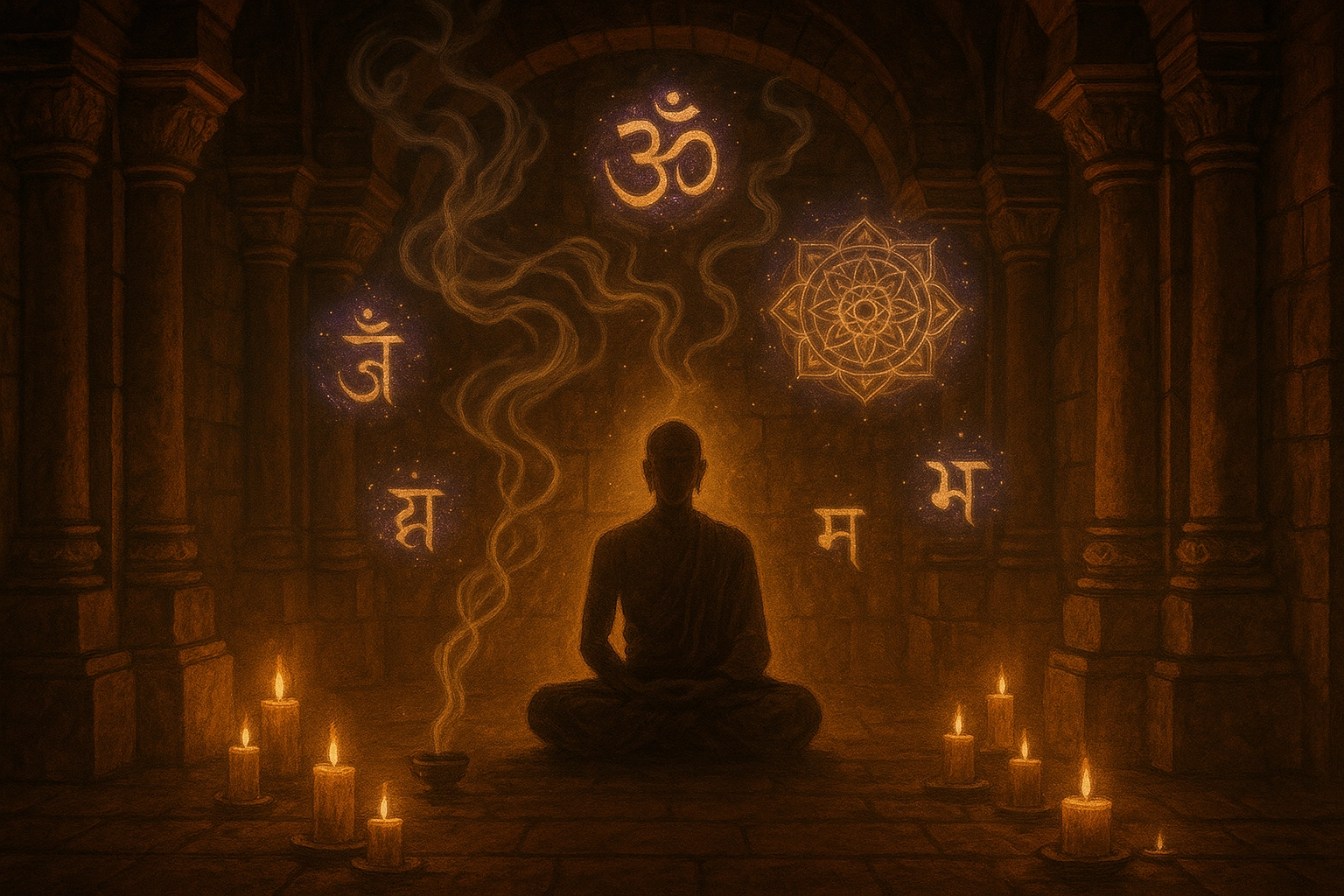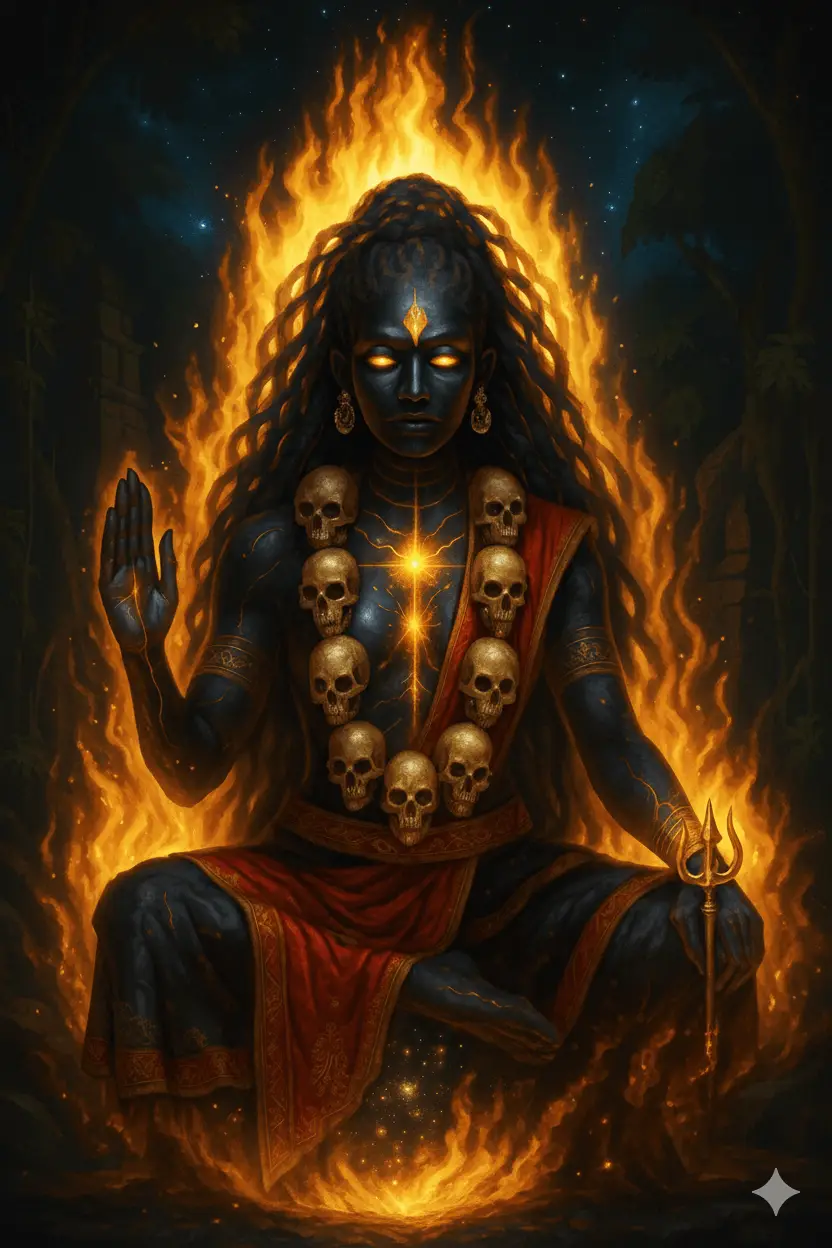If you've ever tried to research tantra, you've probably felt like you're drowning in conflicting information. One source talks about ancient meditation practices and consciousness expansion, while another focuses entirely on sacred sexuality and intimate connection. What gives?
The truth is, you're actually looking at two very different approaches: traditional tantra and neo-tantra. Both have their place in spiritual development, but they're about as similar as a mountain hike and a beach vacation – they might both be journeys, but they'll take you to completely different destinations.
Let's clear up the confusion and help you figure out which path aligns better with your spiritual goals.
What Is Traditional Tantra Really About?
Traditional tantra is an ancient spiritual tradition that dates back to the 7th century, emerging from Buddhism, Hinduism, and Jainism. But here's what might surprise you – sexuality plays a minimal role in classical tantra. If tantra were a vast ocean, sexuality would be just a single drop in that endless expanse of water.

The Real Focus: Consciousness and Transcendence
Classical tantra is all about spiritual enlightenment and expanding your consciousness. Think of it as a direct path to transcendence – what practitioners call the "vertical" plane. The ultimate goal isn't to improve your relationships or heal personal wounds (though those might happen as side effects). Instead, it's about dissolving the ego completely and achieving union with the divine.
How Traditional Tantra Actually Works
The practices involve intensive spiritual disciplines:
- Deep meditation and contemplative practices
- Mantra chanting and sound work
- Complex visualization techniques
- Ritualistic ceremonies and offerings
- Devotion to a guru or chosen deity
These techniques were traditionally passed down through established lineages with rigorous training requirements. You couldn't just pick up a book and start practicing – you needed a qualified teacher who had received the transmission from their teacher, creating an unbroken chain of wisdom.
The Challenge: It's Not Easy
Traditional tantra demands serious commitment. We're talking about dissolving your sense of self, which most people find pretty intense. The practices require discipline, often involve strict lifestyle changes, and can take years or even decades to master.
Enter Neo-Tantra: The Modern Adaptation
Neo-tantra, sometimes called "Californian Tantra," is a completely different animal. It emerged over the last 150 years and really took off during the hippie movement of the 1960s and 70s. This modern adaptation blends New Age practices with some Buddhist and Hindu tantric principles, creating something more accessible but fundamentally different from its ancient cousin.

The Focus: Healing and Sacred Sexuality
Neo-tantra puts sexual energy front and center, viewing it as the most potent energy available for spiritual exploration. The approach operates on what's called the "horizontal" plane – focusing on healing, connecting with others, and personal self-improvement rather than transcendence.
What Neo-Tantra Offers
Neo-tantric practices typically include:
- Conscious sexual practices and techniques
- Partner exercises for deeper intimacy
- Breathwork and energy circulation
- Chakra work and energy healing
- Emotional release and trauma healing
- Sacred sexuality workshops and retreats
The Appeal: It's More Accessible
Neo-tantra doesn't require you to find an authentic lineage holder or commit to decades of rigorous practice. You can attend workshops, read books, or work with coaches who blend tantric concepts with modern psychology and relationship counseling.
The Head-to-Head Comparison
Let's get real about how these approaches stack up for spiritual growth:
Spiritual Depth and Transformation
Traditional tantra offers the deeper spiritual experience. If you're looking for profound transformation and genuine ego transcendence, classical tantra provides the authentic framework and practices. Neo-tantra, while valuable for personal development, primarily works within your existing sense of self rather than dissolving it.
Practical Application
Neo-tantra wins on practical applicability. You can integrate its practices into your daily life and relationships without turning your world upside down. Traditional tantra often requires significant lifestyle changes and may not mesh well with modern Western living.
Learning Curve
Neo-tantra is much more beginner-friendly. You can start seeing benefits relatively quickly, especially in your intimate relationships and personal healing. Traditional tantra requires years of foundational practice before you experience the deeper benefits.
Community and Support
Neo-tantra has a larger, more accessible community of practitioners and teachers. Traditional tantra lineages are rare and often require extensive searching to find authentic instruction.
Which Path Serves Your Spiritual Growth Best?

Choose Traditional Tantra If:
- You're seeking radical spiritual transformation, not just personal improvement
- You're willing to commit to intensive, long-term practice
- You want to work within an established spiritual lineage with authentic transmission
- Your goal is consciousness expansion and ego transcendence
- You're drawn to meditation, ritual, and devotional practices over sexual exploration
Choose Neo-Tantra If:
- You want to integrate spirituality with healing personal and sexual wounds
- You're looking for tools to improve your intimate relationships
- You prefer a more flexible, accessible approach to spiritual practice
- You're interested in blending ancient wisdom with modern psychology
- You want to address trauma and enhance physical intimacy as part of your spiritual journey
The Hybrid Approach
Here's something most people don't consider: you don't have to choose just one path forever. Many spiritual seekers start with neo-tantra because it's more accessible and addresses immediate concerns around relationships and sexuality. As they develop spiritually, some eventually feel called to explore the deeper waters of traditional tantra.
Consider Your Current Life Phase
Your choice might also depend on where you are in life. If you're dealing with relationship issues, sexual trauma, or intimacy challenges, neo-tantra might offer more immediately relevant tools. If you've already done significant personal work and are ready for deeper spiritual exploration, traditional tantra could be your next step.
The Bottom Line
Both traditional tantra and neo-tantra can support spiritual growth, but they're fundamentally different paths. Traditional tantra is like climbing a mountain – challenging, transformative, and leading to transcendent peaks. Neo-tantra is more like cultivating a beautiful garden – nurturing, healing, and creating beauty in your everyday life.
Neither approach is inherently "better" than the other. The question isn't which one is superior, but which one aligns with your spiritual goals, life circumstances, and current level of readiness for transformation.
If you're just starting your spiritual journey or dealing with personal healing, neo-tantra might be the perfect entry point. If you're ready for deep spiritual work and prepared to commit to intensive practices, traditional tantra could offer the profound transformation you're seeking.
Remember, authentic spiritual growth happens when you choose a path that truly resonates with your heart and circumstances. Trust your intuition, start where you are, and remain open to where your spiritual journey might lead you next.



